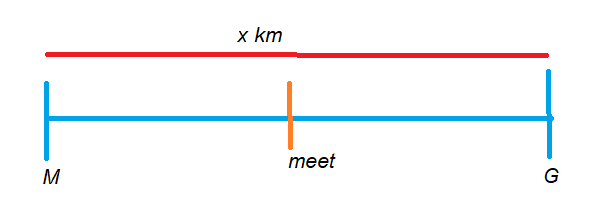Train Problems Complex Examples
In this class, We discuss Train Problems Complex Examples.
For Complete YouTube Video: Click Here
The reader should have prior knowledge of train ratio formulae. Click Here.
Example 1:
Two stations, A and B, are 110 kilometers apart on a straight line.
One train starts at station A at 7 am and travels towards B at 20 kmph.
Another train starts at station B at 8 am and moves towards A at 25 kmph.
At what time will they meet?
Solution:
The below diagram shows the graphical intuition of the example.

One train starts at 7 am, and another at 8 am, one hour after the first train.
Important: By the time the two trains met, they covered the distance between A and B. Key point explained during the formula.
Assume: They met x hours after 7 am.
The train starts at A and travels x hours; the train starts at B and travels x-1 hours.
Distance covered by train started at A = 20x
Distance covered by train started at B = 25(x-1).
The distance covered by both the trains before they met = 110.
20x + 25(x-1) = 110
x = 3
The train met at 10 am.
Example 2:
A train X starts from M at 4 pm and reaches G at 5 pm.
Another train, Y, starts from G at 4 pm and reaches M at 5:30 pm.
The two trains will cross each other at one time?
Solution:
The below diagram shows the graphical intuition of the example.

Assume: the distance is x.
Before the two trains meet, assume the two trains travel y hours.
Both trains cover a distance x before they meet.
The above three points help to solve the example.
Time by X to cover x distance is 1hr.
Time by Y to cover x distance is 3/2 hour.
Speed = Distance / Time
Speed of X = x/1 kmph
Speed of Y = x/(3/2) kmph.
Assume: They met y hours after 4 pm.
xy + 2xy/3 = x
y(1 + 2/3) = 1
y = 3/5 hour
y = 36 minutes.
They met at 4:36 minutes.
